A very common orthodontic problem which presents in Clonmel orthodontics is unerupted ectopic canines. Between 1-3% of people have an ectopic permanent canine.Ectopic canines are by definition out of place. The majority of ectopic canines are on the inner (palatal) aspect of the other erupted teeth.
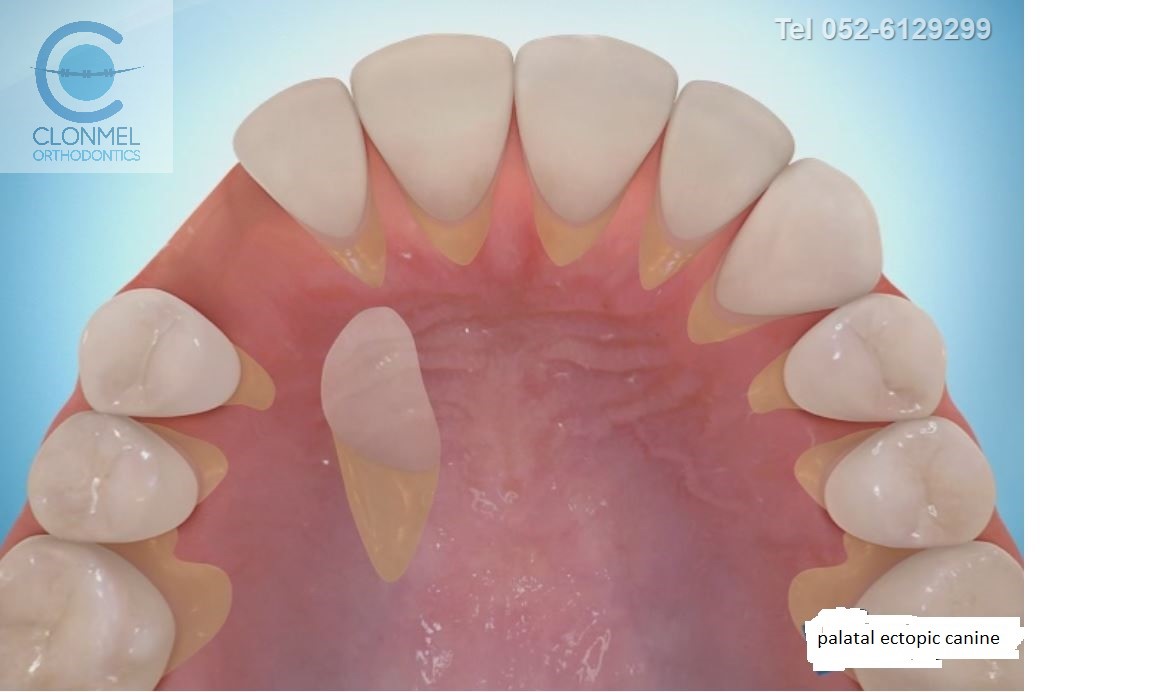
Palatal (inner -side) ectopic canine.
Less commonly the unerupted ectopic canines are on the outer (labial) aspect of the other erupted teeth.
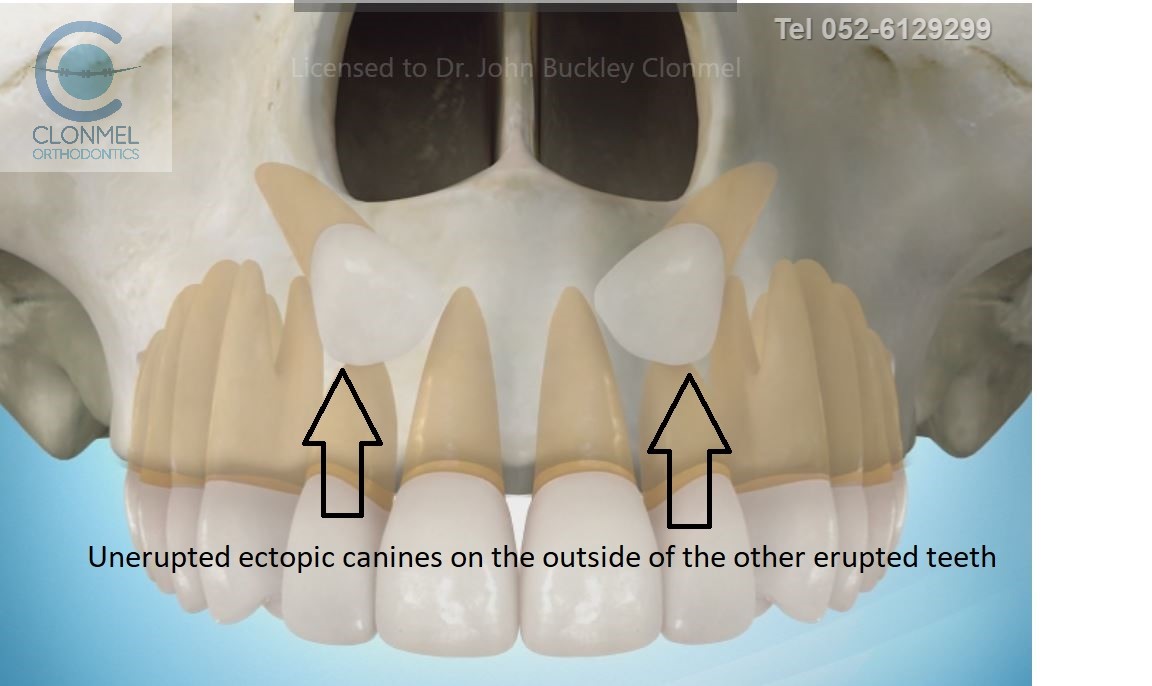
Labial (outer-side) ectopic canines.
When the permanent canine is ectopic it is best if it is detected early on. It is more common in children where there is a family history of the condition, and where the patient has small (possibly peg shaped) or absent lateral incisors.
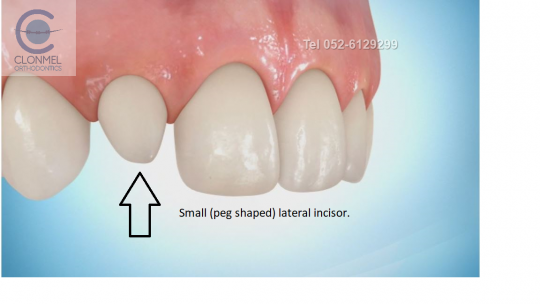
Small or absent lateral incisors are sometimes associated with ectopic permanent canines.
It may sometimes be picked up on an orthodontic exam from the age of 9-10 years old. The definitive diagnosis of ectopic canines is normally diagnosed with the help of orthodontic x-rays.
Interceptive / Preventive Orthodontics.
In approximately 1-3% of people the permanent canines (eye tooth) in the upper jaw can go off course.These ectopic teeth often need to be surgically exposed under general anaesthetic , and then brought into the arch orthodontically. If this can be detected by clinical and radiographic examination at approximately 9- 10 years of age the canines which have gone off course and are inside the arch can be corrected in a significant number of cases by extracting the deciduous (baby) canine. Sometimes as well as extracting the deciduous ( baby) canine tooth , it is better to also create space for the larger permanent tooth, possibly with headgear or another appliance.This may avoid the surgical exposure of the canine under general anaesthetic , and avoid or simplify the subsequent orthodontic treatment. (Please see our previous blog on interceptive orthodontics)
Management of unerupted ectopic canines.
If the permanent canine is ectopic, if possible it is brought into the right place by having it surgically exposed (normally under general anasthetic ) and then moved into the correct position in the dental arch using braces.
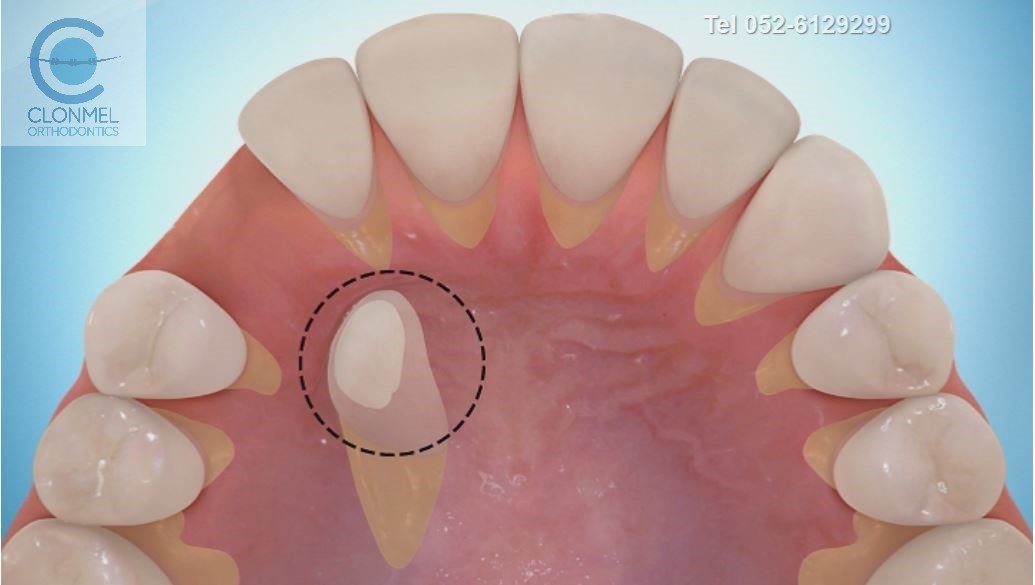
Unerupted upper palatal (inside) permanent canine after surgical exposure.
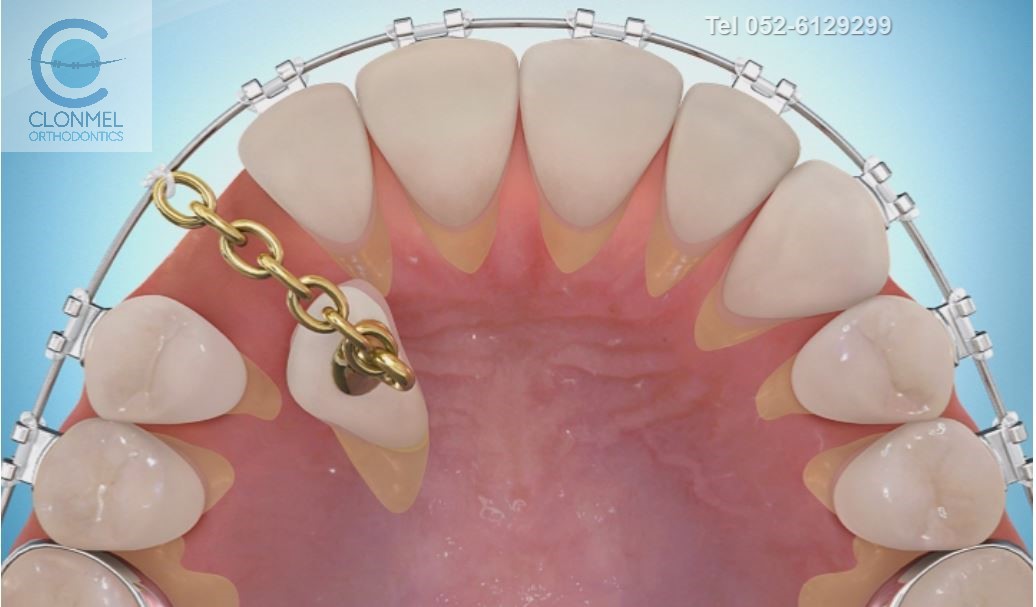
Permanent canine is being brought into place with braces.
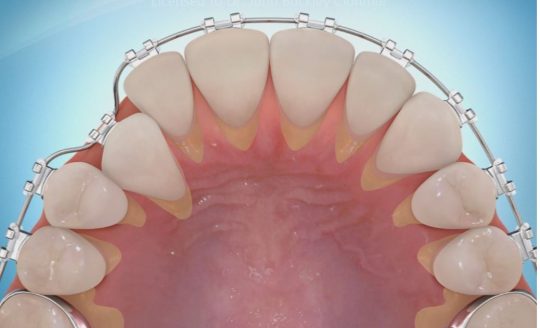
Permanent canine is now close to final position.
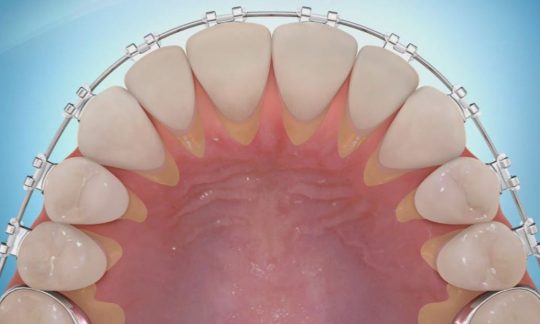
Permanent canine has reached its correct position.
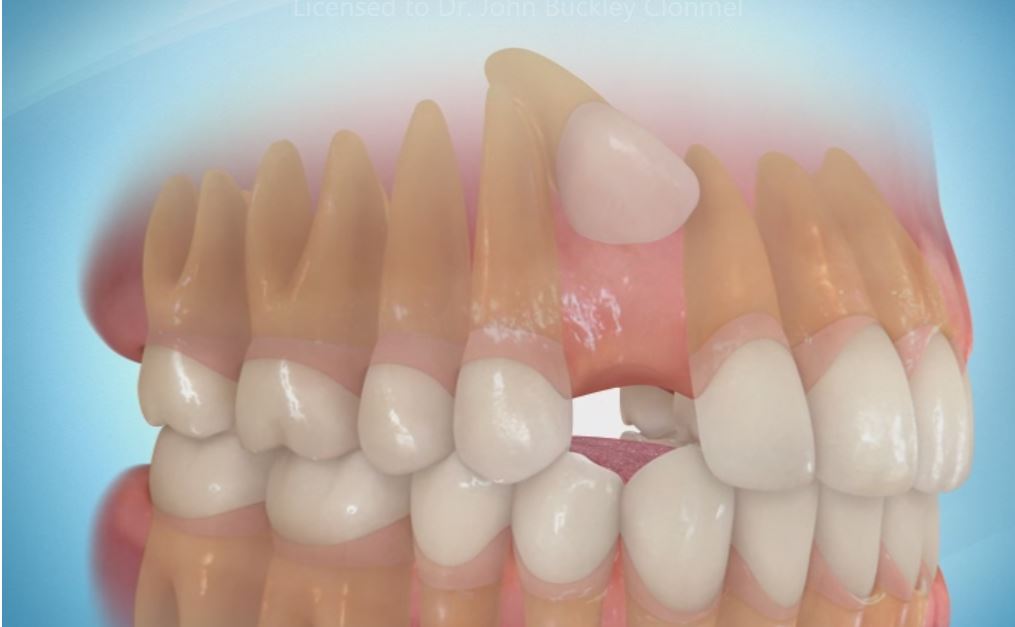
When the unerupted ectopic canine is outside the other teeth it can similarly be brought into place.
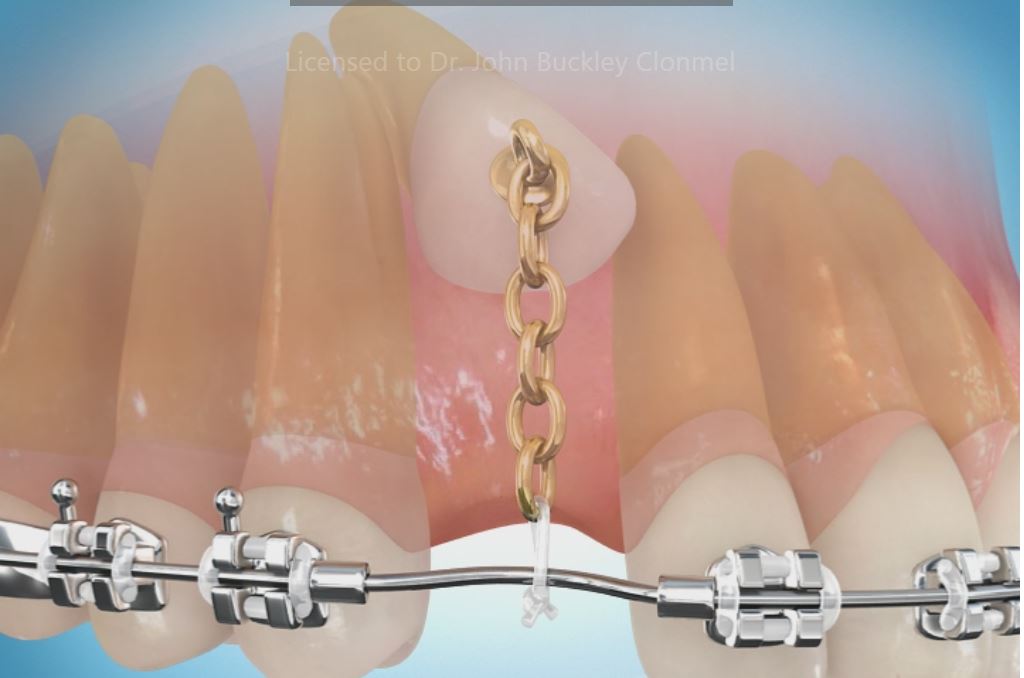
Ectopic (outside) permanent canine is being brought into the correct position with fixed appliances.
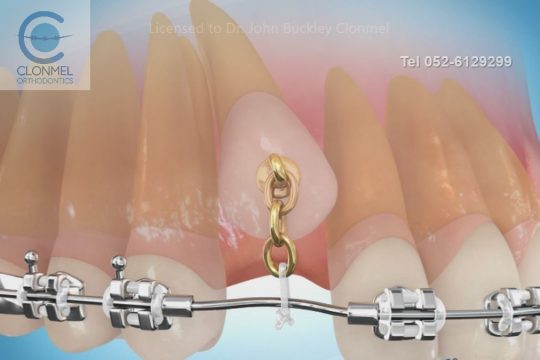
Canine is being brought into correct position with fixed appliances.
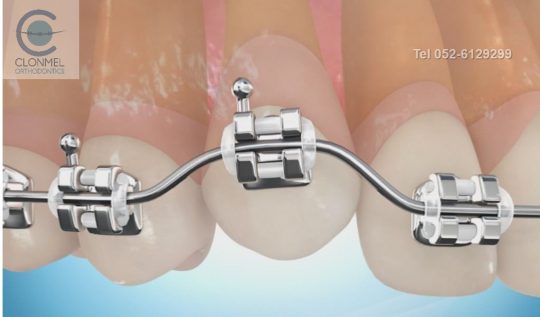
Canine is close to final position
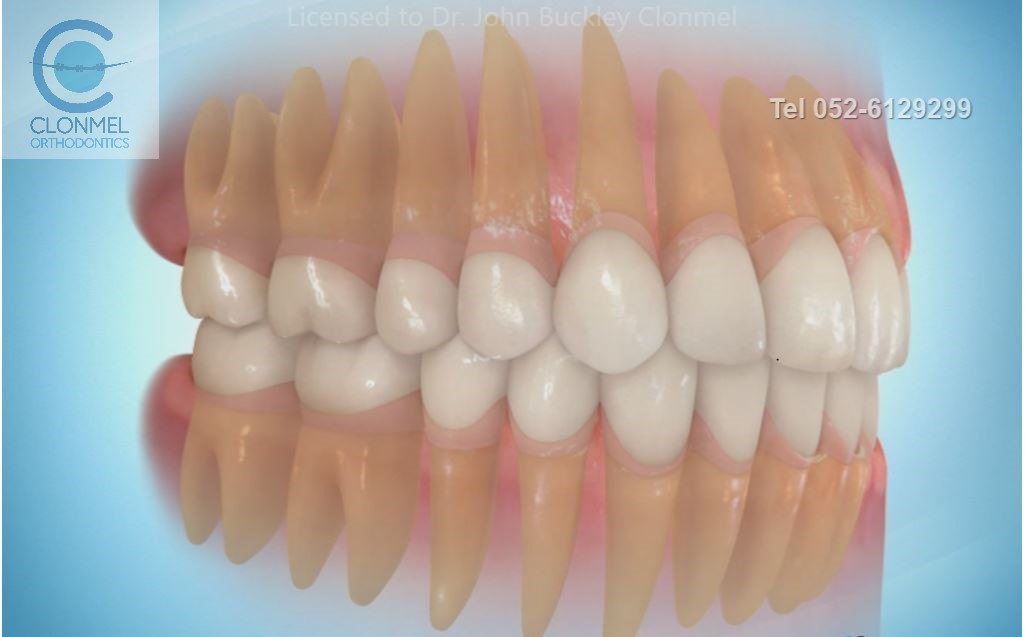
Canine has reached its correct position and fixed appliances have been removed.
Sometimes if the canine is very ectopic or in a difficult position to reposition, consideration is given to extracting the canine. The absence of this tooth may then be problematic.
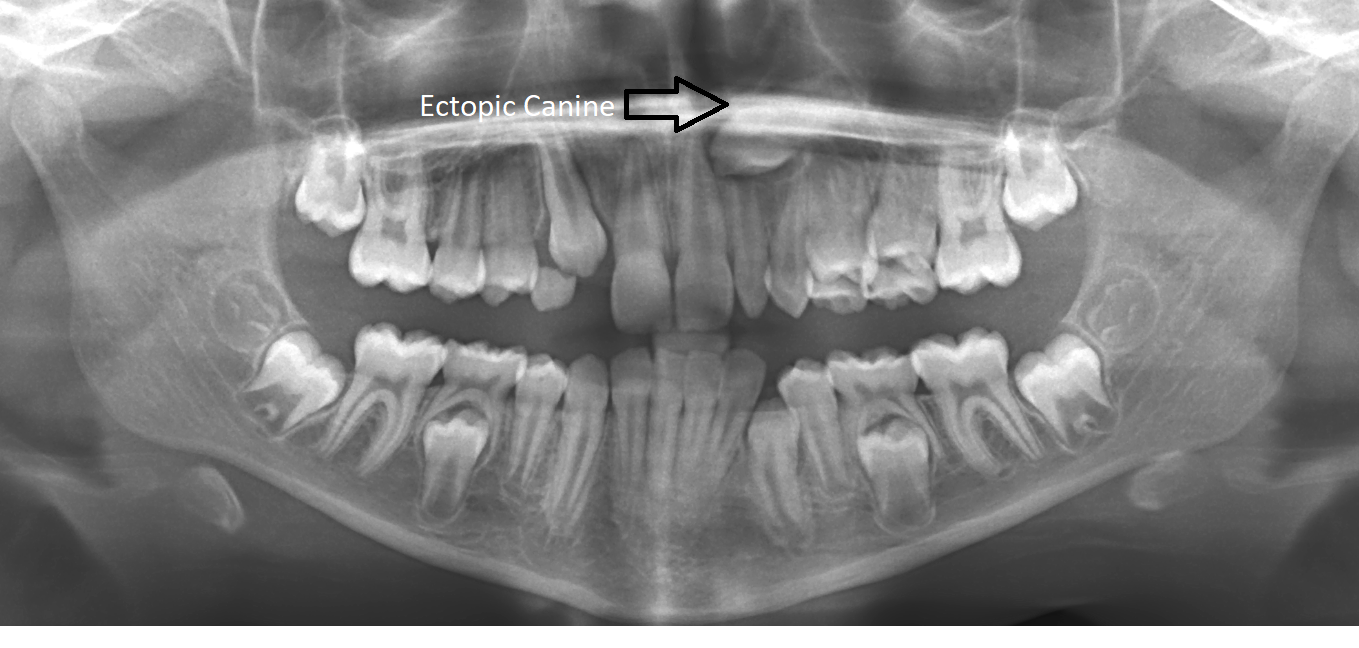
One reason why we need to be vigilant when a permanent canine is ectopic (and unerupted) is because it can quite often cause permanent damage to the adjacent teeth , and on occasion this can be severe enough to cause the loss of the adjacent permanent tooth or teeth due to resorption of the roots of the adjacent teeth.
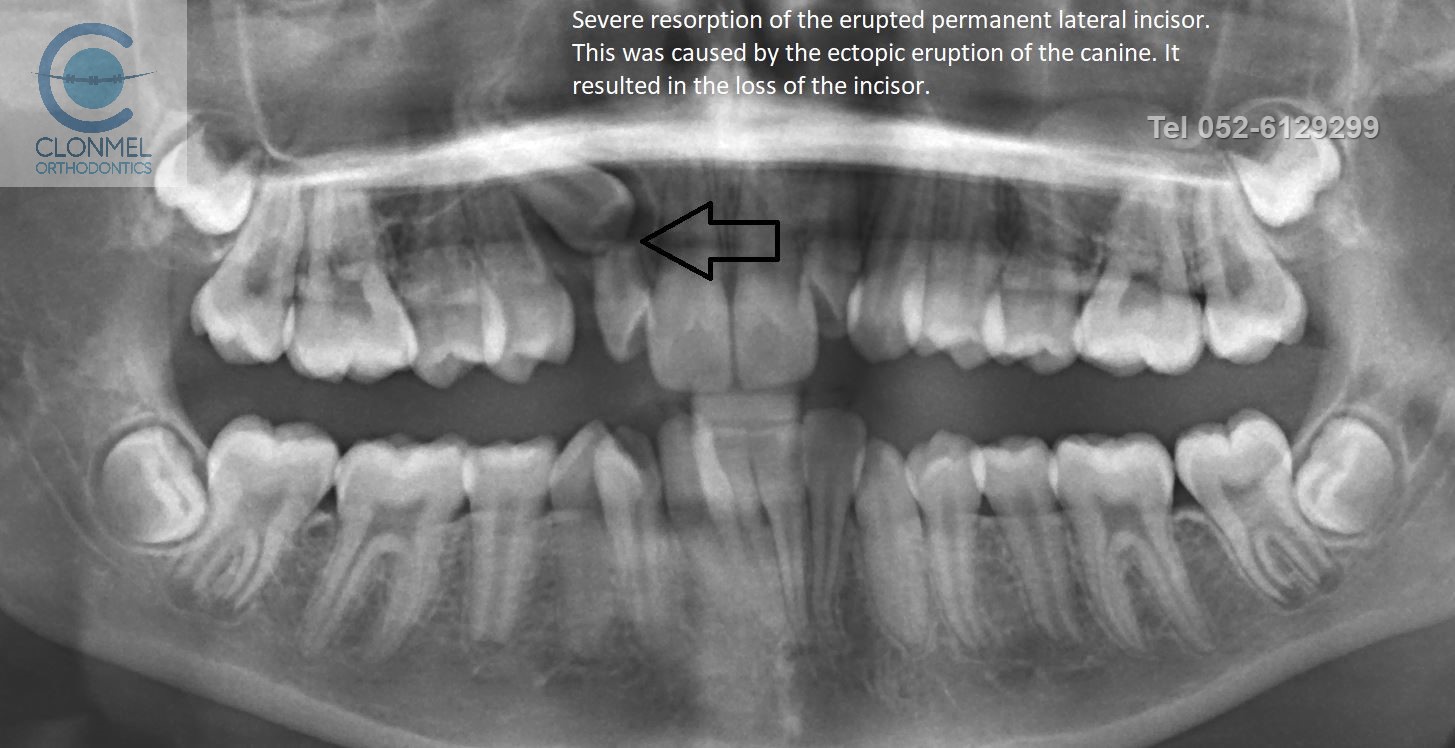
An example of severe resorption of the root of a lateral incisor caused by an ectopic canine. This resulted in the loss of the lateral incisor.
In summary ectopic canines are quite a common problem in children and are detectable from 9-10 years old. It is more common in children where there is a family history of the condition, and where the patient has small (possibly peg shaped) or absent lateral incisors.
Timely intervention with interceptive orthodontics can on occasion correct the position of the ectopic canine.(Please see our previous blog on interceptive orthodontics) Even when it is not possible to prevent /intercept the problem with interceptive orthodontics , it is important that it is diagnosed in a timely fashion to achieve the best possible outcome, and to avoid or minimise possible damage to the adjacent teeth.
……………………………………………………………………………………………………………………………………………………….
This blog was written by Dr John Buckley Clonmel’s most qualified and most experienced orthodontist. We use cutting edge technology in Clonmel Orthodontics to provide excellent orthodontic treatment at affordable prices. Our surgeries are airy spacious and private , like you might expect if you visit a general medical practitioner.
……………………………………………………………………………………………………………………………………………………….
